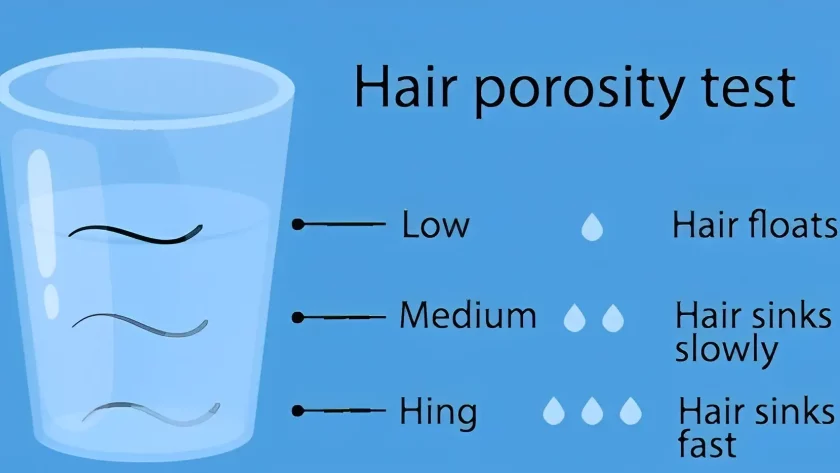Have you ever wondered what your hair porosity is? A Hair porosity test can help you determine if your hair is high, low, or normal porosity. This blog post will cover the ultimate Hair porosity test and provide you with the knowledge you need to identify and care for your hair type. Read on to find out once and for all if your hair is high, low, or normal porosity.
Take the strand test
The hair porosity test is one of the easiest and most effective methods of determining your hair’s porosity level. To take the strand test, start by taking a single strand of your hair and placing it in a cup or bowl of room-temperature water. You can also put the strand in a glass or cup with water and observe for several minutes. If the strand begins to sink right away, your hair has high porosity; if it floats at the top and slowly starts to sink after a few minutes, you have normal porosity; and if it stays floating on top, you have low porosity.
Float test
The float test is one of the most popular hair porosity tests. To do this, fill a bowl with room-temperature water and drop a single strand of your clean, dry hair into the water. Depending on how quickly the hair strand sinks or floats, you can identify whether your hair has high, low, or normal porosity.
If the hair strand sinks quickly and remains submerged for an extended period of time, it indicates that your hair has low porosity. This is because the cuticles are tightly sealed, preventing any moisture from entering the strand. On the other hand, if the strand floats for a long time before slowly sinking, it means that your hair has high porosity. This is because the cuticles are raised or “open” which allows moisture to easily enter the strand. If the strand sinks almost immediately, it means that your hair has normal porosity. This usually indicates that the cuticles are laying flat which allows moisture to enter the strand but also prevents it from escaping.
Overall, the float test can provide great insight into your hair’s porosity level and help you determine what kind of products and treatments may be best suited for your hair type.
Observe your hair’s natural state
To observe your hair’s natural state, you need to pay attention to how it behaves when wet. Hair porosity test is a great way to determine the porosity of your hair. Low porosity hair will take longer to become saturated with water and will also take longer to dry. High porosity hair will soak up water quickly and also dry quickly. Normal porosity hair will be somewhere in between. Pay attention to how long it takes for your hair to become saturated with water and how long it takes for your hair to dry. Also, note whether or not your hair tends to feel heavy or weighed down when wet. This can be an indication of low porosity hair.
Check the ends of your hair
One of the best ways to determine your hair porosity is by examining the ends of your hair. You can do this by gently lifting a strand of hair with your fingers and looking closely at the ends. If your hair ends are rough and look almost burnt, then you have high porosity hair. On the other hand, if the ends of your hair feel smooth and almost look sealed, then you have low porosity hair. Normal porosity hair will fall in between these two extremes.
You can also use a Hair Porosity Test to test the elasticity of your hair. This involves wrapping a few strands of your hair around your finger and then gently pulling them apart. If the strands snap off easily, then you have high porosity hair; if they don’t break and remain intact, then you have low porosity hair; and if they stretch slightly before breaking, then you have normal porosity hair.
Use the vinegar test
The vinegar test is one of the simplest and most reliable ways to measure your hair’s porosity. To do this, you’ll need to have white vinegar, a glass bowl, and your hair sample.
Start by mixing two parts of water with one part of white vinegar in a bowl. Place the sample of your hair into the mixture and let it sit for 10-15 minutes. Once it has finished soaking, remove the strand of hair and check to see if it floats or sinks.
If the strand of hair floats, then your hair has low porosity; if it sinks, then your hair has high porosity. If it remains suspended somewhere between the surface and the bottom, then your hair is considered to have normal porosity.
The vinegar test is an effective way to get an accurate assessment of your hair’s porosity quickly and easily. This method can help you determine what products are best for you and your unique hair type, allowing you to make informed decisions about how to care for your locks. Knowing your hair porosity can also help you choose the right styling methods and tools for your specific needs.








